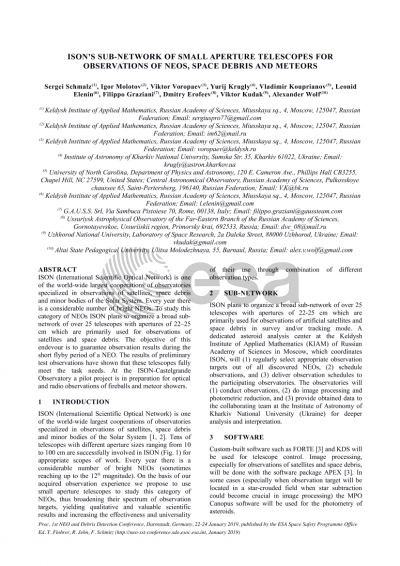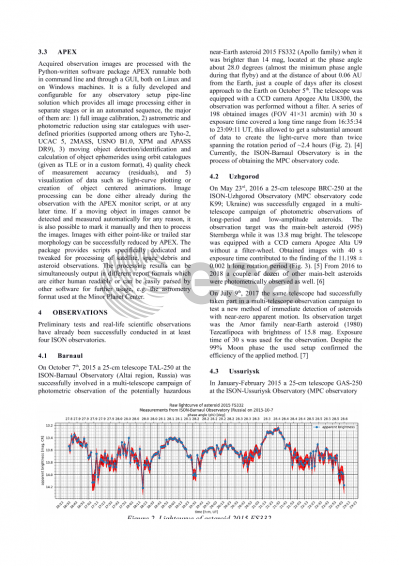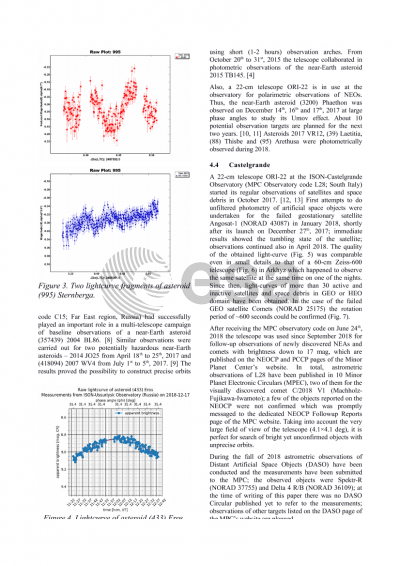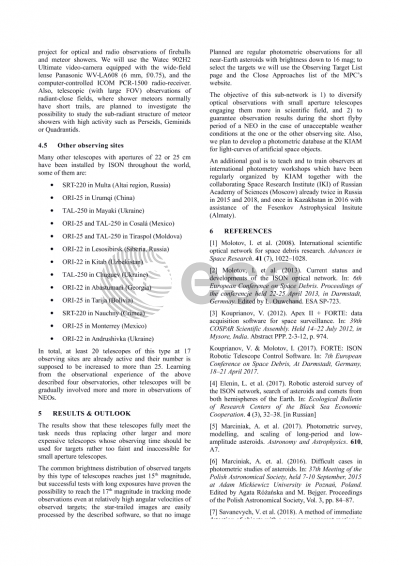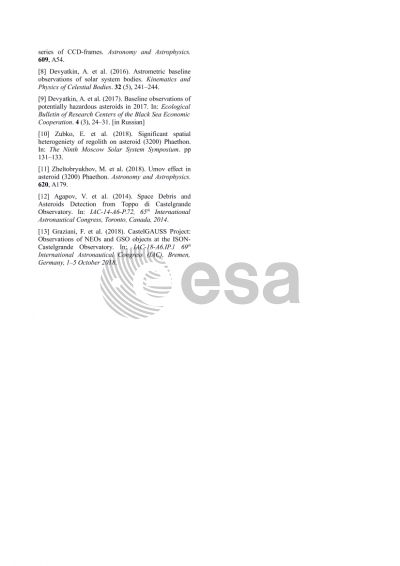Document details

Abstract
ISON (International Scientific Optical Network) is one of the world-wide largest cooperations of observatories specialized in observations of satellites, space debris and minor bodies of the Solar System. Tens of telescopes with different aperture sizes ranging from 10 to 100 cm are successfully involved in ISON. Every year there is a considerable number of bright NEOs (sometimes reaching up to the 12th magnitude). To study this category of NEOs ISON plans to organize a broad sub-network of over 25 telescopes with apertures of 22-25 cm which are primarily used for observations of artificial satellites and space debris. A dedicated asteroid analysis center at the Keldysh Institute of Applied Mathematics (KIAM) of Russian Academy of Sciences in Moscow, which coordinates ISON, will (1) select appropriate observation targets out of all discovered NEOs, (2) schedule observations, and (3) deliver observation schedules to the participating observatories. The observatories will (1) conduct observations, (2) do image processing and photometric reduction, and (3) provide obtained data to the collaborating team at the Institute of Astronomy of Kharkiv National University (Ukraine) for deeper analysis and interpretation. Custom-built software such as FORTE and KDS will be used for telescope control. The objective of this endevour is to guarantee observation results during the short flyby period of a NEO for the case of unacceptable weather conditions at the one or the other observing site. Additional goal is to teach and to train observers in the scope of international photometry workshops which have been regularly organized by KIAM together with the collaborating Space Research Institute (IKI) of Russian Academy of Sciences (Moscow), already twice in Russia (2015, 2018) and once in Kazakhstan (2016). Preliminary test observations have already been successfully conducted with a 25-cm telescope in Barnaul (Altai region, Russia), with a 25-cm telescope in Uzhgorod (Ukraine), with a 22-cm telescope in Ussuriysk (Far East region, Russia) and with a 22-cm telescope in Castelgrande (South Italy). The results show that these telescopes fully meet the task needs thus replacing other larger and more expensive telescopes which can save their observing time for targets rather too faint and inaccessible for small aperture telescopes. At the ISON-Castelgrande Observatory a pilot project is in preparation for visual and radio observations of fireballs and meteor showers with an all-sky camera, a video camera and a radio-receiver setup.
Preview
